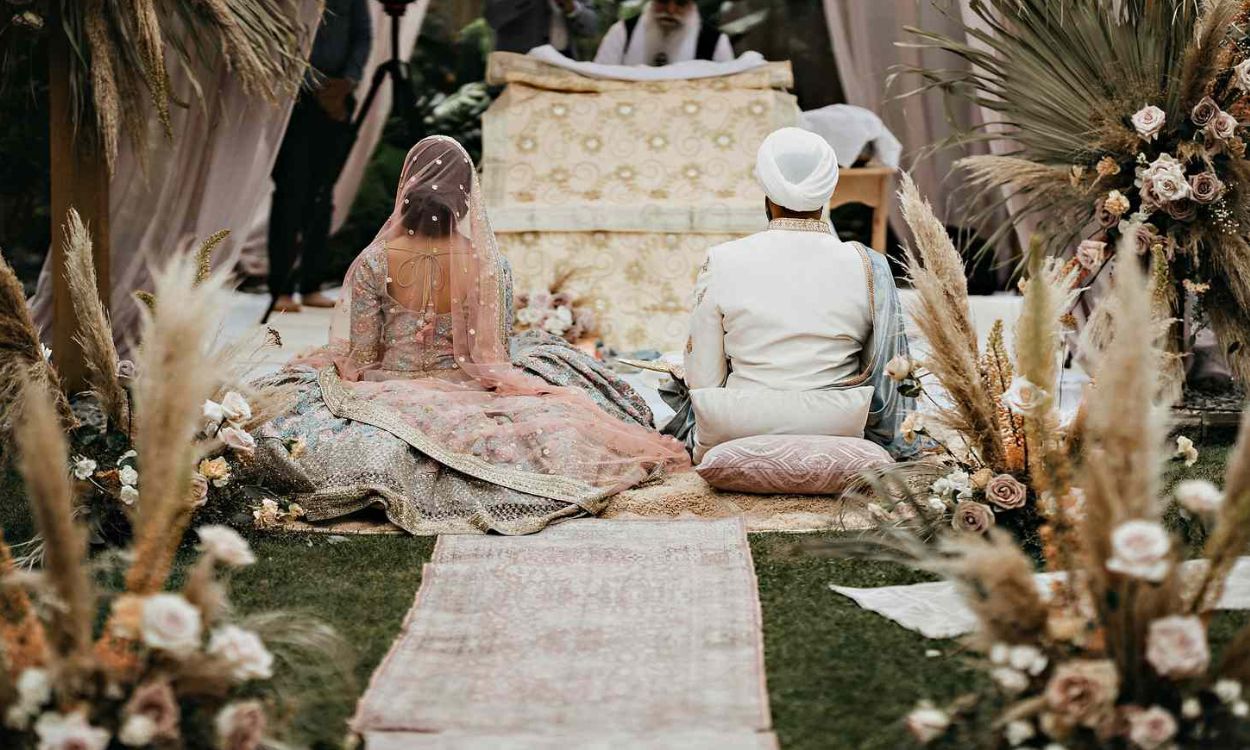
Punjabi weddings are known for their lively celebrations, rich cultural traditions, and a sense of unity and joy that fills the air. These weddings are a grand affair, filled with colorful rituals, dances, music, and a sense of togetherness. If you’re planning to attend or participate in a Punjabi wedding, or just want to learn about the customs and practices, this guide will take you through the vibrant and heartfelt rituals that make up this special occasion.
1. Pre-Wedding Rituals
Before the wedding day, there are several rituals that families follow, and each one carries its significance. These rituals are designed to bring good fortune, remove any negative influences, and prepare the couple for a successful and happy marriage.
- Roka Ceremony: This is the official announcement of the couple’s engagement. It’s a simple yet significant ceremony, where both families come together, exchange gifts, and formally accept the alliance.
- Sagai (Engagement): This ritual typically takes place after the Roka ceremony. The couple exchanges rings, and the families give gifts, usually including clothes, jewelry, and sweets.
- Mehendi: A few days before the wedding, the bride’s hands and feet are adorned with intricate henna designs. This ceremony is often a lively event with music, dance, and lots of celebration. Family members join in to apply henna, and it’s a time for the bride and her loved ones to bond.
- Sangeet: A lively pre-wedding function, the Sangeet is a night full of music and dance performances by the families. The bride and groom’s family come together to showcase their dancing talents, often with choreographed routines, singing, and fun games.
2. Wedding Day Rituals
On the big day, the wedding ceremonies are filled with energy, emotion, and devotion. These rituals take place in both the bride’s and the groom’s home, and at the Gurdwara (Sikh temple) where the wedding is usually held.
- Kantian Ceremony: Before leaving for the wedding, the bride and groom’s families perform small, private rituals at their homes to prepare them for their new journey. This includes applying a mark on the couple’s foreheads with a mixture of turmeric and oil to ward off any evil.
- Baraat: The groom arrives at the wedding venue with his family and friends in a procession called the Baraat. They dance, sing, and celebrate as they make their way to the bride’s home or the Gurdwara.
- Milni: The groom’s family is welcomed by the bride’s family in this tradition. The families exchange garlands, and the groom’s side is greeted with great warmth, symbolizing the unity of the two families.
- Anand Karaj (The Sikh Wedding Ceremony): The wedding ceremony takes place at the Gurdwara, where the couple takes four rounds (Lavan) around the holy scripture, the Guru Granth Sahib. This symbolizes their commitment to each other and their shared journey of faith and love.
3. Post-Wedding Rituals
Once the ceremony concludes, the couple begins their new life together, but not before participating in several rituals that signify the start of their married journey.
- Vidaai: This emotional ritual is when the bride bids farewell to her family. She leaves her home with her husband, symbolizing the transition from her parental home to her new life with her in-laws. The family gives her blessings and sometimes, a small gift for her journey.
- Ghar Wapsi: Upon arrival at the groom’s home, the bride is welcomed by his family. A traditional ceremony takes place where the bride is invited into her new home, and she is given gifts, along with blessings from the groom’s family. She is expected to step into the house with her right foot as a gesture of prosperity and good luck.
- Chooda Ceremony: The bride is given a set of red and white bangles, known as Chooda, which she wears for a few weeks after the wedding. This symbolizes her married status and is considered a mark of good luck.
4. Fun Elements of Punjabi Weddings
In addition to the main rituals, there are a few fun elements that make Punjabi weddings even more lively:
- Bhangra and Gidda: The quintessential dance forms of Punjab, Bhangra (performed by men) and Gidda (performed by women), add a lot of energy to the wedding celebrations. These dances are often performed during the Sangeet, wedding, and post-wedding parties.
- The Joota Chupai: A playful tradition where the bride’s family hides the groom’s shoes, and the groom’s family has to negotiate to get them back. It’s a fun-filled tradition that brings humor and laughter to the occasion.
- The Dhol: The beating of the dhol (traditional drum) is a signature sound of Punjabi weddings. The lively rhythm adds to the festive atmosphere, and it’s often heard during the Baraat, Sangeet, and even the post-wedding celebrations.
The Blessings Matrimonials
The Blessings Matrimonials specializes in connecting individuals from diverse backgrounds, offering a personalized and professional approach to matchmaking. With a focus on cultural sensitivity, we guide you through the beautiful journey of marriage, ensuring that your values and aspirations align perfectly with your life partner. Specializing in Punjabi wedding rituals, we provide expert guidance to help you embrace and celebrate the rich traditions of Punjabi weddings, ensuring that every moment is steeped in cultural significance and joy. Let us help you find a partner and create the wedding of your dreams.
Conclusion
A Punjabi wedding is not just a union of two individuals but a celebration of love, culture, and family. With its vivid colors, joyful music, and meaningful traditions, these weddings embody the true spirit of Punjabi culture. From the pre-wedding rituals to the vibrant celebrations and sacred ceremonies, every step in a Punjabi wedding is a reflection of the community’s values, bringing together not just the bride and groom but also their families in a bond that lasts a lifetime.
Don’t Miss: How Marriage Bureaus Facilitate Inter-Cultural Marriages: Bridging Traditions & Building Connections